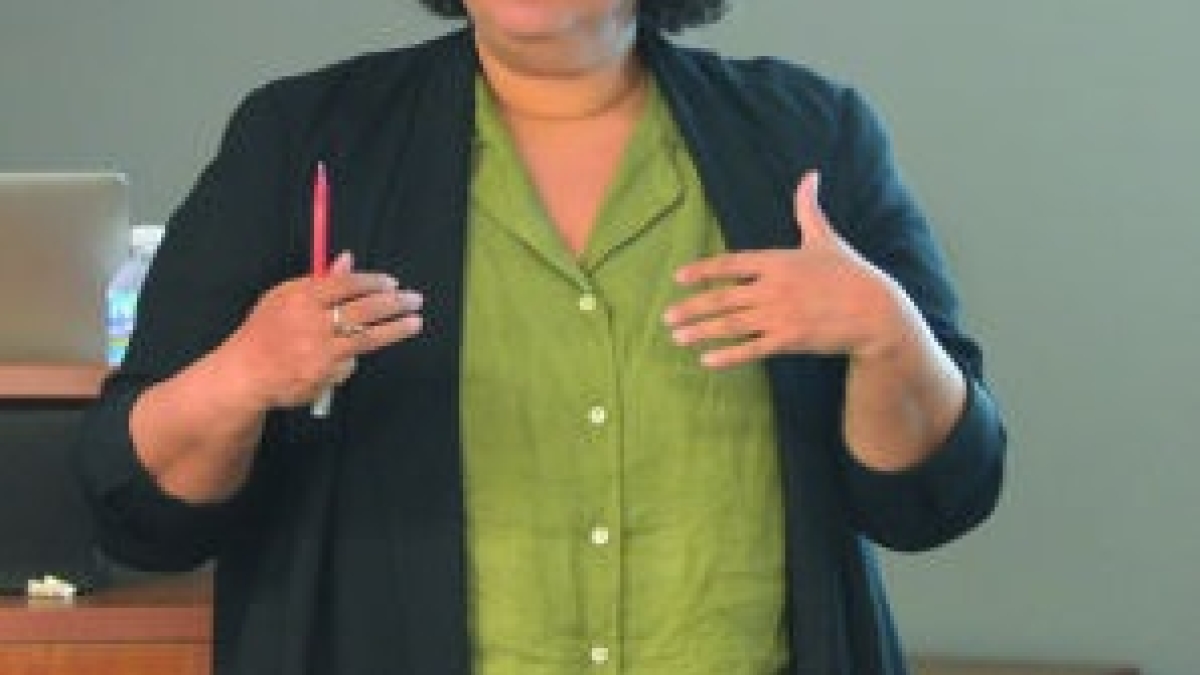ASU professors' passion for history wins them prestigious fellowships in Berlin

During her semester in Berlin, ASU history professor Monica Green will focus on turning her historical analysis of the disease landscape into a book, tentatively titled “A Global History of Health.”
Photo courtesy of Zach Schaffer/The Pitt News.
Two professors are 1st ever Berlin Prize Fellows from ASU
Monica Green had just finished editing a volume on the Black Death when in the spring of 2014, the Ebola virus outbreak erupted in West Africa.
As the number of people succumbing to the disease grew, it became clear to the ASU history professor that there was a dire, worldwide need for a resource that could help people understand diseases and how to deal with them.
“People (at both local and global levels) were paralyzed by not having a conceptual framework for thinking about this disease and how to react to it in a 21st-century context,” Green said.
“I realized that I simply couldn’t wait any longer before putting forward my historical analysis, which – I believe – helps us make better sense of disease in the present-day world by understanding why the disease landscape today looks the way it does.”
Luckily for Green, a professor in the College of Liberal Arts and Sciences, she will have plenty of time to hunker down this fall and turn that historical analysis into a book, tentatively titled “A Global History of Health,” during her semesterlong fellowship at the American Academy in Berlin.
Green and ASU art history professor Corine Schleif share the honor of being the first two Berlin Prize Fellows chosen from Arizona State University. Schleif – who, like Green, specializes in medieval history – will attend the academy for the spring 2016 semester.
Also like Green, Schleif is passionate about the role history, specifically art history, plays in informing the present and future.
“There’s this idea that a piece of art always says the same thing because, once it’s finished, it stays that way forever,” said Schleif, a professor in the School of Art, within the Herberger Institute for Design and the Arts. “But art actually has the ability to participate in society throughout the centuries.”
During her semesterlong fellowship, Schleif will be working on a book about Adam Kraft, a 15th-century late-Gothic sculptor based in Nuremberg, Germany, whose work was appropriated by the Nazi Party some 400 years after his death.
The conscription of Kraft’s work by the Nazis, Schleif says, is just one example of how art and history endure and continue to “participate” in culture, politics and even religion.
Both Green and Schleif look forward to their respective fellowships in Berlin, as they will be joining a group of scholars, writers, policymakers and artists from all over the globe to pursue their individual work and also engage in stimulating conversation and thought.
“It’s an honor to be chosen, and I’m very flattered,” Schleif said.
Since the American Academy in Berlin welcomed its first fellows in 1998, it has become one of Europe’s most visible and effective institutions of transatlantic dialogue and has built up an extensive and enduring network in the corporate, political, academic and cultural communities in the United States and in Germany.
The academy is now accepting applications for the 2016-2017 academic year.